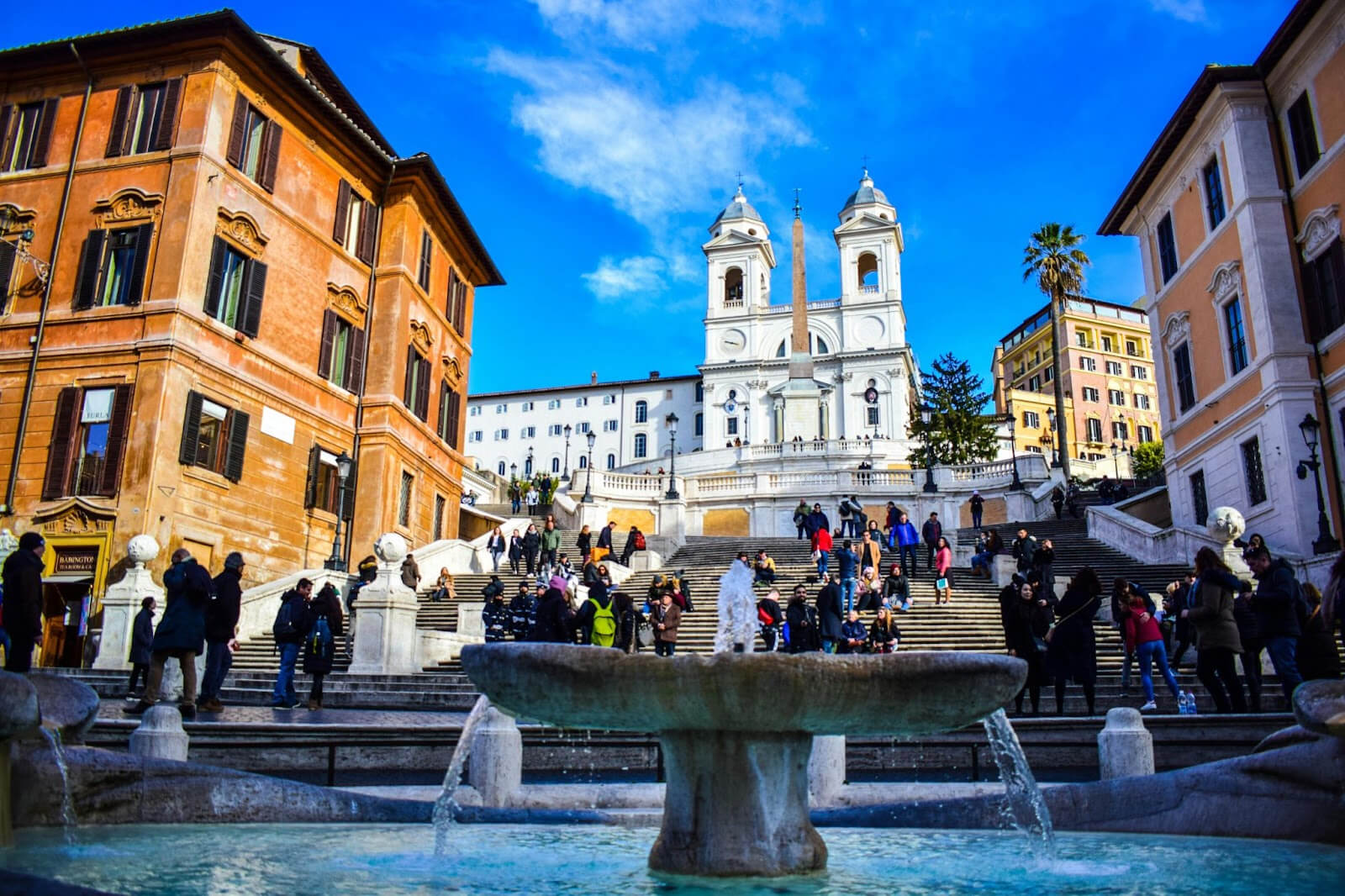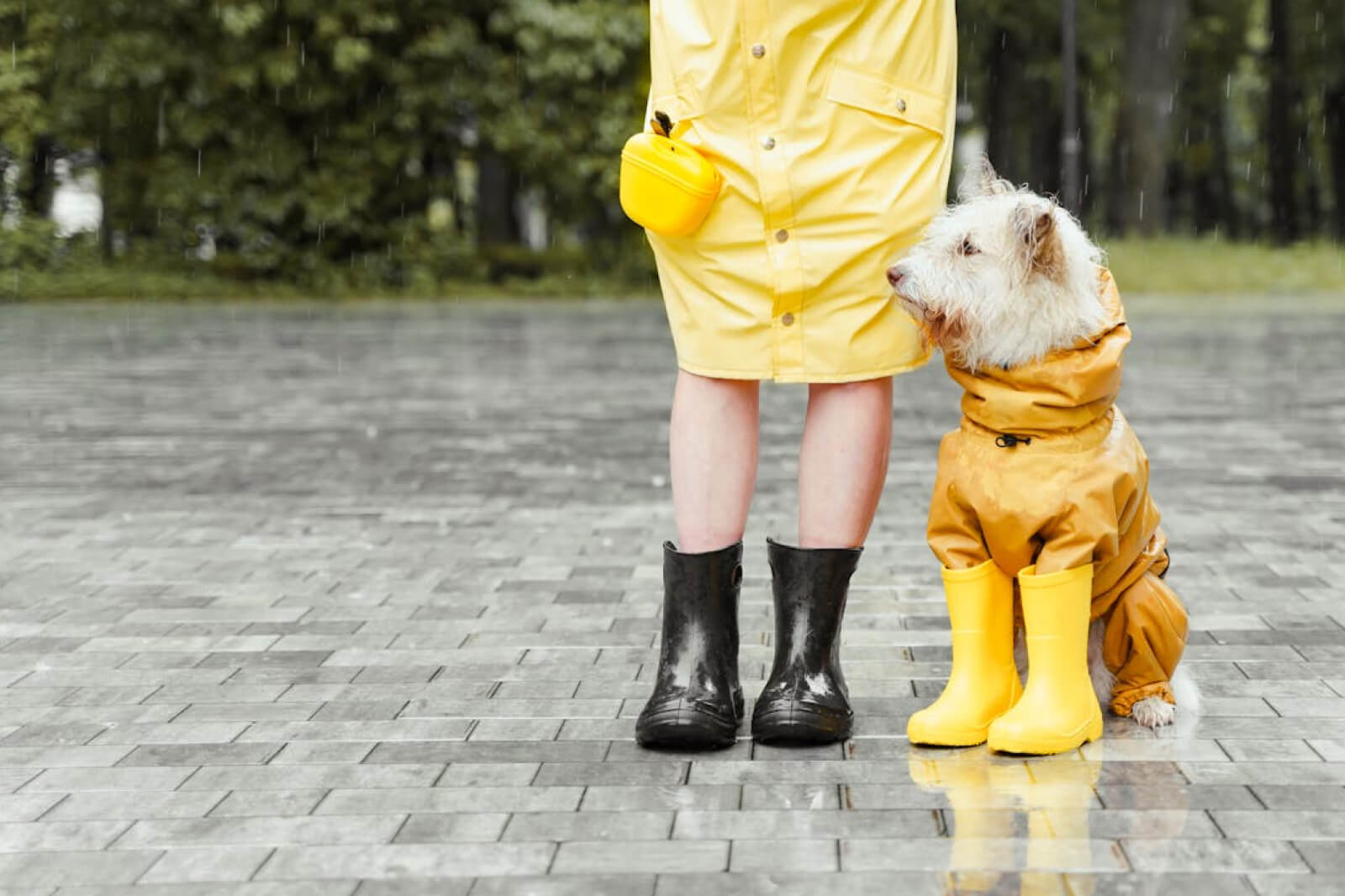
How People Around the World Are Celebrating the Year of the Ox


But for much of the world there is a second calendar that follows the cycles of the moon — as well as the animals of the Chinese zodiac separated into five elemental phases. By that calendar, February 12th, 2021 marks the beginning of the year of the Metal Ox.
How Asians Celebrate Lunar New Year Worldwidewww.youtube.com
While the Lunar New Year is often referred to as “Chinese New Year” — and marked with parades in the Chinatown sections of various cities — in reality the occasion is marked with different traditional celebrations in countries throughout East Asia. These are some of the ways that people around the world are celebrating today.
Envelopes and Pouches Full of Cash
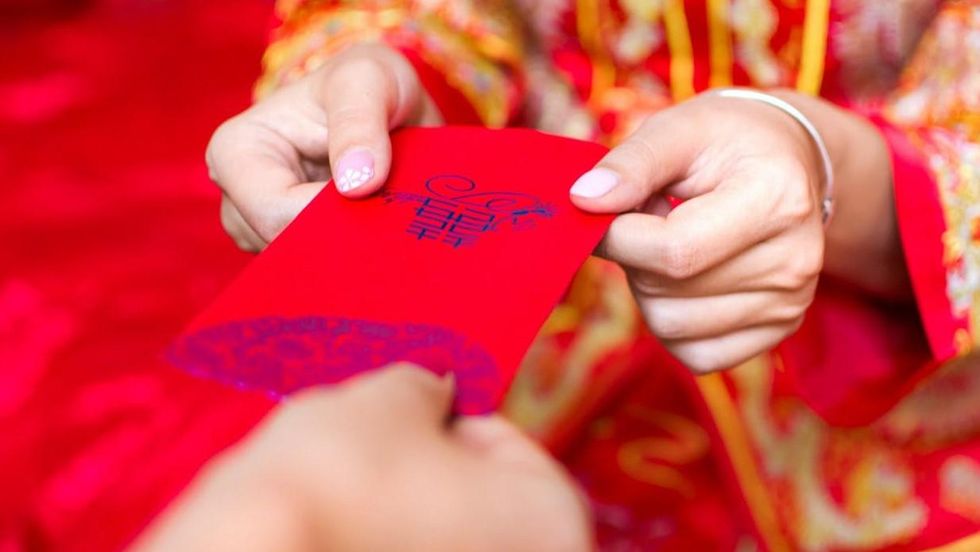
A gift of money is a traditional way to mark the Lunar New Year in many countries. Often the gift will be presented in a traditional, decorative red envelope — the color red symbolizing prosperity in Chinese culture — but in Korea the gift is often presented in a colorful, silk pouch.
The Lion Dance
The Lion Dance— in which one or more performers wear(s) a colorful lion costume as part of a parade or as a standalone dance performance — is a Lunar New Year tradition in many countries. The giant lion head and the wild, often acrobatic movements of the dance were traditionally intended to frighten evil spirits in order to ensure that the new year would bring good fortune.
Statues and Mascots
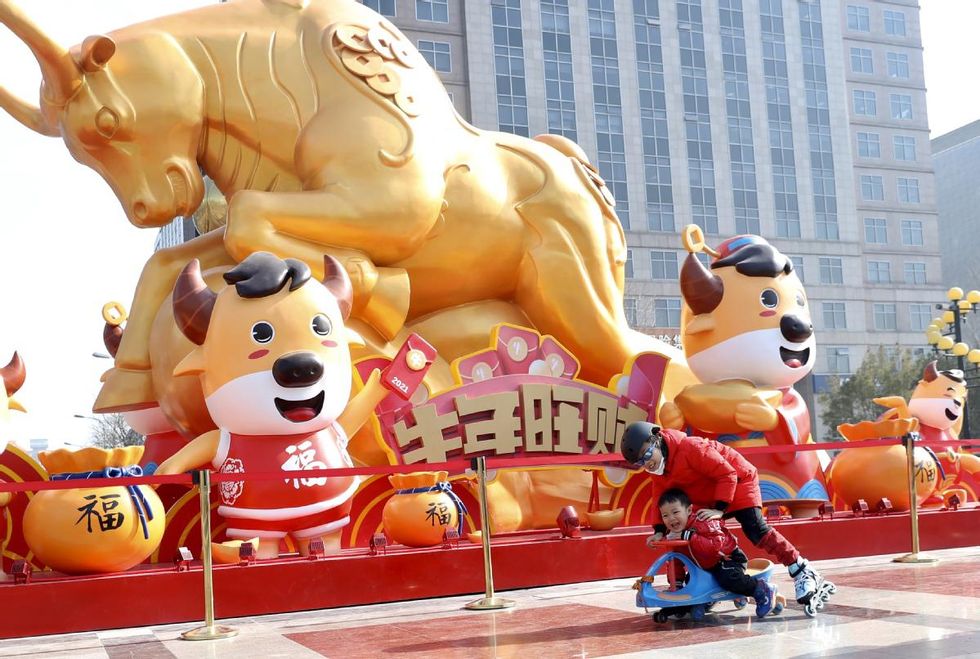
To commemorate the new year, many cities will erect a statue of the animal from that year’s zodiac. And for children to celebrate, there are often zodiac themed mascots and plushies.
Traditional Outfits
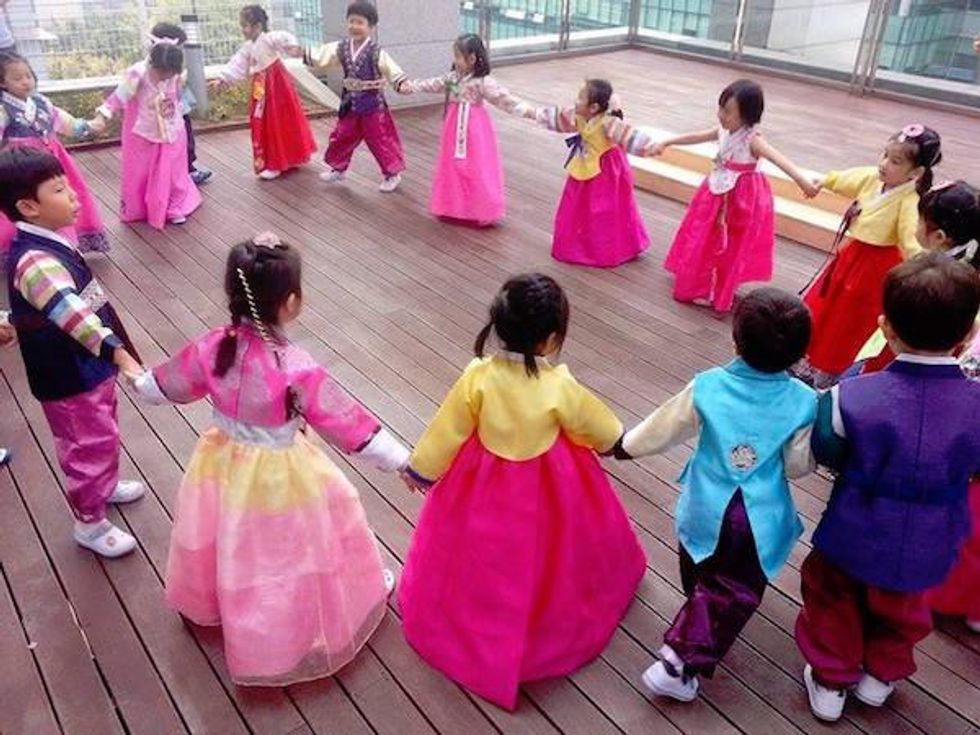
In many countries it’s considered important to dress in your best traditional clothing for the Lunar New Year. In Vietnam the traditional dress for women is the áo dài; in Korea, the hanbok; and in China, the qipao. But the most important thing in China is to wear red — again, to symbolize prosperity.
Lanterns and Fireworks
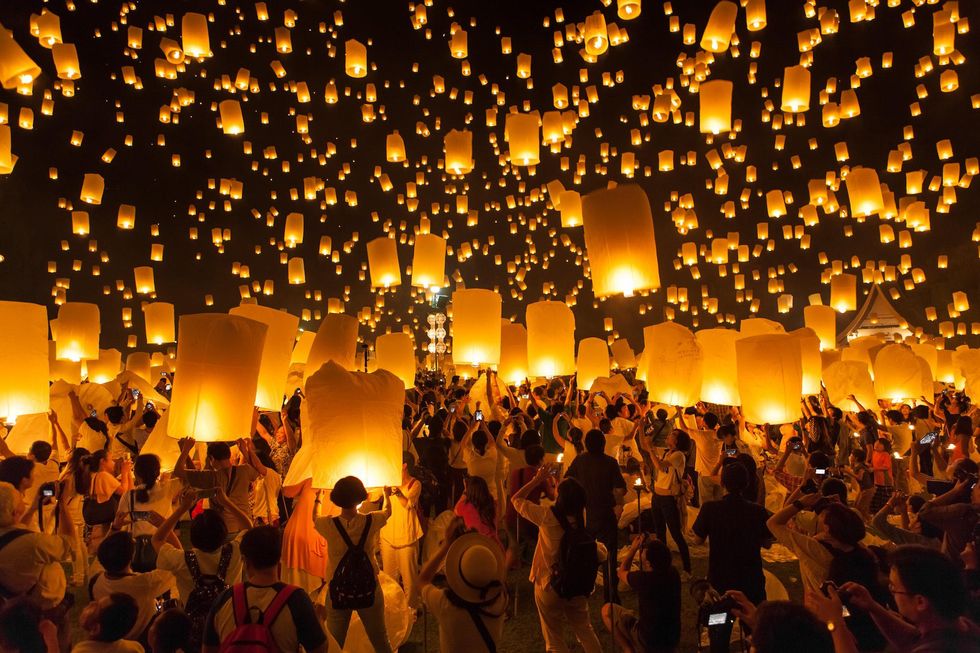
Traditionally, celebrations of the Lunar New Year are closed out with a lantern festival in which large, lightweight paper lanterns are lit and allowed to float into the sky, lifted by the heat of their flames like hot air balloons. While that’s still observed in many places and can make for a beautiful scene, the addition of fireworks makes for a slightly more exciting spectacle.
Traditional Foods
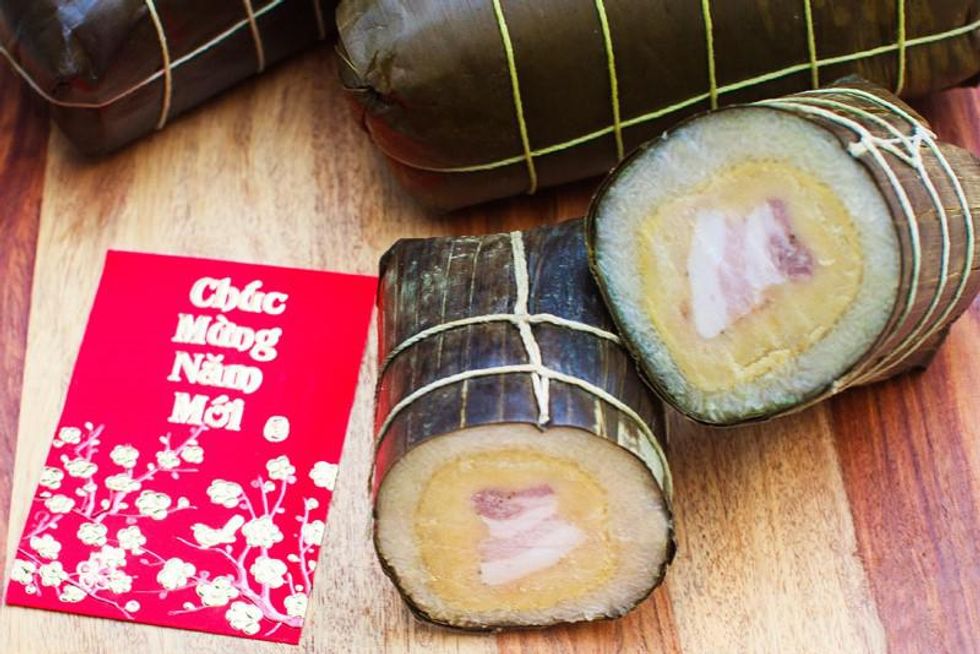
Each country has their own specialty foods that are associated with the Lunar New Year.
In China, dumplings — particularly yellow dumplings — are thought to resemble old forms of gold currency and are eaten on the Lunar New Year as another symbol of prosperity. In Korea, a stew of sticky rice cake known as tteokguk is served with the belief that it brings good luck for the year. And in Vietnam, bánh tét, a rolled cake of sticky rice with mung beans and pork is cooked in banana leaves and served in circular slices thought to resemble the moon.
A Meal With Your Ancestors
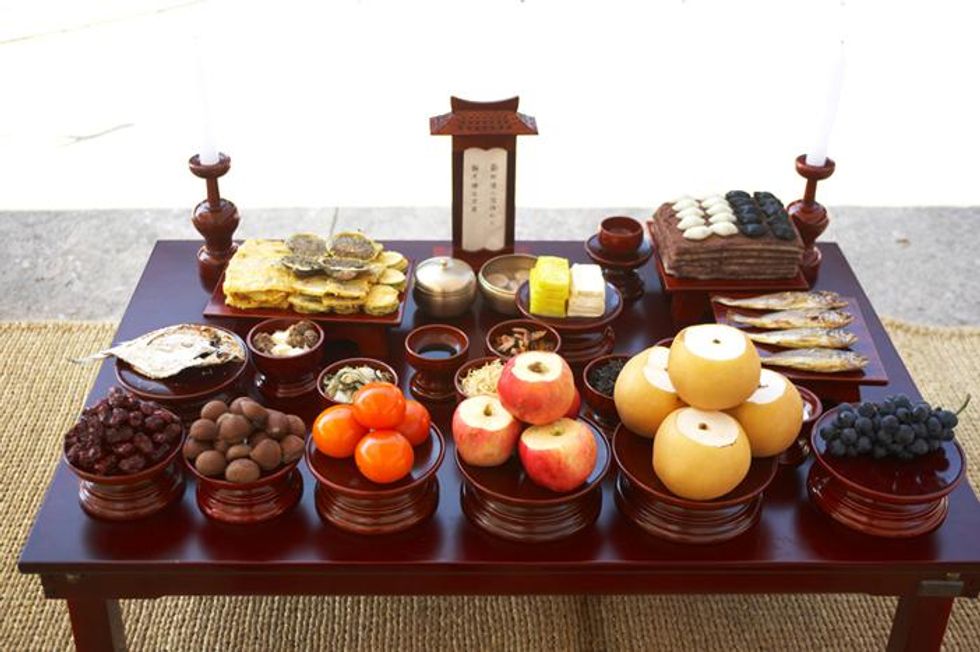
In Korean Buddhism, there is another Lunar New Year tradition calledcharye.. Similar to the Mexico’s Day of the Dead, charye is a subtype of jesa — a ceremony honoring ancestors who have passed. While jesa are sometimes celebrated for a particular ancestor on the anniversary of their passing, a charye ceremony generally honors multiple generations all at once.
To celebrate, a table is set with a lavish meal, with the name of the ancestors who are being honored displayed at the table. In addition to the traditional tteokguk, the table is usually set in a careful arrangement with fish and meat along with persimmons, chestnuts, jujube, and Korean pears — all of which are thought to confer benefits in the afterlife.
After all the ancestors have had their meals, the family eats too.
So how will you be celebrating the year of the ox? Let us know on Facebook or Twitter.
